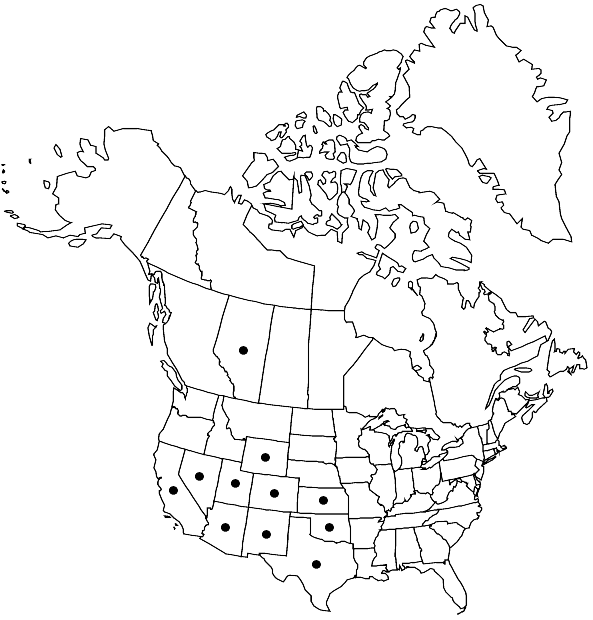Difference between revisions of "Fissidens sublimbatus"
Moss Fl. N. Amer. 1: 13, plate 13, fig. A. 1936,.
FNA>Volume Importer |
imported>Volume Importer |
||
| (One intermediate revision by the same user not shown) | |||
| Line 45: | Line 45: | ||
|publication year= | |publication year= | ||
|special status= | |special status= | ||
| − | |source xml=https:// | + | |source xml=https://bitbucket.org/aafc-mbb/fna-data-curation/src/2e0870ddd59836b60bcf96646a41e87ea5a5943a/coarse_grained_fna_xml/V27/V27_485.xml |
|genus=Fissidens | |genus=Fissidens | ||
|species=Fissidens sublimbatus | |species=Fissidens sublimbatus | ||
Latest revision as of 21:26, 5 November 2020
Plants to 6 × 1.5 mm. Stem usually branched; axillary hyaline nodules absent; central strand present. Leaves as many as 22 pairs, ovate to lanceolate, rounded to obtuse-apiculate, apiculus formed of a single, clear, sharp cell, to 1 × 0.1–0.4 mm, perichaetial and larger leaves oblong to oblong-ligulate and lanceolate; dorsal lamina usually narrowed abruptly proximally, often arched, ending well before insertion; vaginant laminae 1/2–3/4 leaf length, ± equal, minor lamina ending on or near margin; margin ± entire but serrulate distally, elimbate or limbate, limbidium 1-stratose, restricted to vaginant laminae or found to variable degrees on all laminae, often conspicuously intralaminal in proximal parts of vaginant laminae; costa ending 2–5 cells before apex or percurrent, bryoides-type; laminal cells 1-stratose, smooth, strongly bulging, ± obscure, usually arranged in discernable rows distally, firm-walled, 6–10 µm, twice as deep as wide. Sexual condition cladautoicous, gonioautoicous, and possibly rhizautoicous. Sporophytes 1 per perichaetium. Seta to 5 mm. Capsule theca exserted, slightly inclined, bilaterally symmetric to erect, radially symmetric, to 1 mm; peristome bryoides-type; operculum 0.3 mm. Calyptra cucullate, smooth, 0.6 mm. Spores 14–23 µm.
Habitat: Soil in arid areas, where plants are often partially buried, often under overhanging rocks and boulders, and in the shade of trees and shrubs
Distribution

Alta., Ariz., Calif., Colo., Kans., Nev., N.Mex., Okla., Tex., Utah, Wyo., Mexico, South America (Argentina), Africa.
Discussion
Fissidens sublimbatus is closely allied to F. crispus but is restricted to arid habitats. Indeed, it appears to be the only species of the genus found in Death Valley. Stems of F. sublimbatus are dimorphic, unlike the monomorphic stems of F. crispus. Leaves of infertile stems are small, ovate-lanceolate and usually apiculate, the apiculus formed by a single, clear, sharp cell. The dorsal lamina in these leaves usually ends well before the insertion, are often arched, and the limbidium is most often restricted to the vaginant laminae but can be absent. The 1-stratose limbidium is best developed on perichaetial and larger leaves, but ends below the leaf apex and is usually edged by distinctly chlorophyllose cells. The percurrent costa occurs mostly in perichaetial leaves. As in F. crispus, the distal laminal cells are arranged in distinct rows.
Selected References
None.